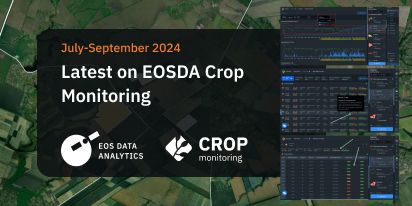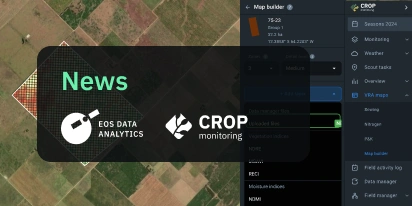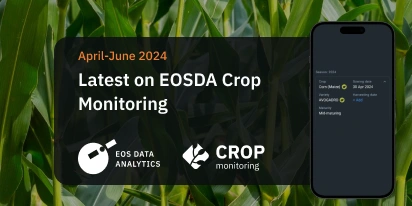How To Grow Rapeseed (Canola) And Get Increased Yields
Rapeseed plant (Brassica napus), also known as canola, is the annual rape plant that belongs to the Brassicaceae family. Canola is one of the most widespread oilseeds in the world. This crop has a wide range of uses. The leading role is played by the oil produced from canola seed. Today, almost 80% of the cultivated crop is processed into oil. As a food product, rapeseed oil may even compete with olive oil. It helps lower blood cholesterol and prevent heart attacks and strokes. The technical use of rapeseed oil is equally popular. It is widely used as a biofuel. Green mass, hay, and rapeseed grass is a great feed for cattle.
There are hundreds of rapeseed varieties in every country that are adapted to local climatic conditions. We will go through the most widely grown.
Winter vs. spring varieties
Currently, farmers cultivate two main types of rapeseed: winter and spring. The only difference between the two is that winter rapeseed is more tolerant to the cold temperatures but is more vulnerable to drought. Besides, winter rapeseed has higher yields.
Another classification of varieties is based on the intended purpose of the crop. The following types are distinguished:
- Food
- Technical
- Fodder
The most popular of these are industrial rapeseed and canola.
Industrial rapeseed vs. canola
Industrial rapeseed is grown for obtaining raw materials for the chemical industry, primarily for the production of biofuel. These varieties contain a lot of erucic acid.
Edible varieties are grown to produce valuable oil for culinary purposes. Back in the 1960s, the demand for rapeseed was almost zero due to its unusual greenish color and unpleasant aftertaste. That is why the geneticists have bred special varieties of rapeseed, the oil of which is as close as possible in its characteristics to olive oil or even better. A distinctive feature of these varieties is the low content of erucic acid and high content of oleic acid. One of those rapeseed varieties is canola or Canadian rapeseed, which is the most known and produced rapeseed type. Most of the time, rapeseed is referred to as canola.
Rapeseed is one of the most widespread oilseeds in the world. The development of rapeseed farming remains stable in countries that produce it. World production of rapeseed oil over the last 10 years has increased by 23%. The reason for that is the wide use of rapeseed in food production, where it’s a competitor of olive oil. This crop is also an excellent green fertilizer and an excellent honey plant, which also adds to its production.
The leaders in rapeseed production in 2020 are:
- Canada – 19 million metric tons
- EU – 16 million metric tons
- China – 13 million metric tons
- India – 7 million metric tons
Among those countries, you can use EOSDA Crop Monitoring in Canada to manage your rapeseed field.
Climatic conditions requirements for growing spring and winter canola are very different. There is less risk in growing spring canola, since the possible negative influence of winter weather is excluded, and the growing season is shorter. Therefore, it can be grown in more northern areas and in regions affected by the continental climate. Canola climate requirements are best met in regions with high relative humidity, heavy rainfall, and cooler growing temperatures. Large fluctuations in yields of spring canola in warm continental conditions are caused by a lack of moisture and severe pest infestations. Rapeseed germination temperature is 2 – 3 ° С. Spring canola can tolerate short-term frosts down to -5 °C.
Compared to the requirements for climatic conditions, the requirements of spring rapeseed to the soil are much lower. They are almost the same as those of winter rapeseed. It’s best to grow canola in soils with an average humus content and optimum acidity (pH = 6.2 – 7.0). Good rapeseed yields are obtained on soft loamy soils. It is not recommended to grow spring canola on soils with stagnant moisture. Sandy soils, poor in soil moisture, are also unsuitable, especially in extremely arid areas.
Here are the main growth stages of canola.
0. Germination
This is the stage when the cotyledons emerge above the soil surface.
1. Leaf development
At this canola growth stage, the first leaves of the plant appear. The stage lasts until 9 or more leaves unfold.
2. Formation of side shoots
This stage marks the beginning of side shoot development. The stage lasts until 9 or more side shoots appear.
3. Stem elongation
This canola growth stage is manifested in the appearance of visibly extended internodes. It lasts until 9 or more internodes are visible.
4. Inflorescence emergence
This stage starts when the flower buds of the plant become visible from above (“green bud”). The appearance of the first petals mark the end of the stage.
5. Flowering
This is the stage when the first canola flower opens. It lasts until 50% of flowers on the main raceme open and older petals fall off.
6. Development of fruit
At this stage, the pods of canola plants reach their final size. The stage lasts until more than 80% of the pods have reached the final size.
7. Ripening
This canola growth stage marks the beginning of ripening. It ends when more than 80% of the pods are ripe, and the seeds are dark and hard.
8. Senescence
This is the stage when the plant dies and dries out.
Land preparation for planting rapeseed includes:
- Application of herbicides and fertilizers, and their mixing with the soil
- Weed control
- Ensuring optimal soil structure in the upper layer of the soil
- Ensuring sufficient temperature of the seedbed in the early sowing period
An untimely plowing or over-plowing can:
- Deplete moisture reserves of the soil
- Deteriorate soil structure and lead to the formation of a surface crust
- Lead to soil compaction
- Lead to the formation of large lumps
- Stimulate the loss of organic matter in the soil
- Increase soil erosion
When preparing land for farming rapeseed, carry out plowing to achieve a uniform, well-compacted soil structure. All spring pre-sowing soil treatments should be carried out to a depth of 2.5 – 5 cm so that the soil can dry quickly to the depth of treatment.
Use EOSDA Crop Monitoring to help track soil moisture levels on your field.
Spring rapeseed, same as winter rapeseed, is a long-day plant. It requires a little cold at the initial stage of its development, which means early sowing is necessary. Modern canola varieties have a vegetation period of 90 – 100 days, and seed germination period of 4 – 5 days.
Spring rapeseed should be sown as soon as the soil condition allows. It is usually sown first in crop rotation, before sowing cereals. The best time for sowing is usually late autumn or early winter. But if it’s a high rainfall zone, sowing can be carried out in early spring. The crop is planted into moist soil.
EOSDA Crop Monitoring can help assess when your field is ready for planting rapeseed.
Sowing is usually done with a row spacing of 20 to 45 centimeters to give enough space for the rapeseed branch to develop. Canola planting depth should not exceed 2 – 3 cm, givenif the soil is moist. Canola seeding rate is 4 – 8 kg per hectare, depending on the use of varieties or hybrids, which have different weights per 1000 seeds. The goal is to sow about 60 to 80 seeds per square meter to obtain 40-50 plants to harvest. Keep in mind that the seed rate of spring canola can be higher in comparison to winter canola. It’s due to the fact that the development of an individual plant is weaker and its competitiveness to weeds is lower.
If the plants are seriously damaged during the emergence of seedlings, then the plant density may not be sufficient. The minimum density threshold for maintaining a canola field is from 5 to 15 plants per square meter at the end of winter.
See your field productivity zones in EOSDA Crop Monitoring to distribute seeds across the field rationally.
Mineral fertilizers are the main factor in the formation of high rapeseed yields. For the formation of 1 ton of main product, canola fertilizer requirements are: 50 – 60 kg of nitrogen, 25 – 35 kg of phosphorus, and 40 – 60 kg of potassium.
The consumption of nutrients mainly occurs while flowering and decreases in the ripening. A rapidly developing healthy crop can protect itself from pests in the early phases of its growth. And rapid growth is achieved through the optimal and balanced application of fertilizers.
Nitrogen is the main rapeseed fertilizer that the crop requires. The needs of the crop for nitrogen are not the same at different phases of its development. With a lack of nitrogen, the plants acquire a light green and then yellowish color. The leaves dry up and fall off, turn yellow or orange-brown, the stem turns purple-red, and the branches are underdeveloped.
The optimal doses of nitrogen fertilizers in the cultivation of spring rapeseed are 10 – 15% less than in winter rapeseed. An approximate dose of nitrogen fertilization can be calculated based on the optimal value of nitrogen consumption of 50 – 60 kg per 1 ton of seeds (depending on soil fertility).
Identify productivity zones in EOSDA Crop Monitoring to distribute fertilizers across the field rationally.
Rapeseed is a moisture-loving crop. During the growing season, it consumes 1.5 – 2 times more moisture than cereal crops. However, like other crucifers, it does not tolerate lands with groundwater close to the surface. That is why excessively humid, swampy areas located in low places, which are prone to early frosts, are unsuitable for this crop.
When cultivating rapeseed, it is necessary to take into account its high demand for water supply during the entire growing season, which is 400-500 mm. For a good harvest of winter rapeseed, 600-800 mm of precipitation per year is optimal. And for spring rapeseed, 500-700 mm is enough. Rapeseed irrigation is especially needed during the period of stem elongation, budding (inflorescences emergence), and flowering of plants.
Adequate soil moisture must also be ensured during sowing for the plant’s uniform emergence. When cultivating spring rapeseed, even under continental climatic conditions, this is not problematic. The conditions are different when sowing winter rapeseed, when dry periods are frequent. That is when it’s necessary to water canola.
Here are the most common rapeseed diseases and the ways to protect the crop from them:
Rape Stem Weevil
The larvae of this pest eat out holes inside the stem of the plant. The stems bend and crack along the length.
Protection measures:
- Insecticides treatment during the growing season
Crucifer flea beetle
These beetles eat out 1.5–2 mm holes in the leaves of a plant. Severely damaged leaves dry out. The activity of flea beetles increases in dry and hot weather.
Protection measures:
- Seed incrustation
Turnip sawfly
The caterpillars feed on rape leaves without touching the thick veins.
Protection measures:
- Seed incrustation
- Insecticides treatment during the growing season
Pollen beetle
These beetles feed on pollen, stamens, pistils in buds and blooming flowers. Damaged buds eventually fall off. If there is minor damage, the plant develops deformed pods. Judging by the length of the buds’ stems, you can determine the reason for buds damage. If the length of the stem is less than 1 cm and it is thin, the reason is wilting, and if they are well developed and have a length of more than 1 cm, it is affected by the beetle.
Protection measures:
- Insecticides treatment during the growing season
Cabbage seed weevil
The larvae of this pest cause direct damage by eating 3 – 4 seeds, and indirect damage by making ways for the cabbage mosquito to get into the pods.
Protection measures:
- Insecticides treatment during the growing season
EOSDA Crop Monitoring will help assess your crops health based on vegetation indices.
Here are the most common rapeseed diseases and the ways to protect the crop from them:
Rape root rot
The plants affected by root rot turn yellow and are easy to pull out of the soil. The disease starts from the roots and progresses higher, destroying the entire plant, resulting in its death.
Protection measures:
- Seed treatment
- Optimal sowing time
- Crop rotation
Powdery mildew
This disease starts on young leaves, causing them to curl, exposing the lower leaf surface. Favorable conditions for the development of the disease are early sowing, thickened sowing, warm and humid weather, intensive nitrogen fertilization.
Protection measures:
- Fungicides treatment
- Selection of resistant varieties
- Optimal sowing dates
Fusarium wilt
This disease causes the death of seedlings. During the growing season, in the early stages of development, the disease manifests itself in the form of yellowing and wilting of individual leaves, and in the later stages – premature drying of individual branches. In wet weather, a pink mycelium of the pathogen is observed at the bottom of the affected stem.
Protection measures:
- Seed treatment
- Crop rotation
Gray mold
This disease develops intensively in wet weather, affecting the entire rape plant. The affected plants are covered with gray fluffy mycelium of the pathogen. In dry weather, the affected plant tissue dries up and becomes light gray.
Protection measures:
- Crop rotation
- Seed treatment
EOSDA Crop Monitoring helps assess the condition of plants via vegetation indices.
When harvesting rapeseed, keep in mind that the plants tilt to the side. The leaves and stems of the upper part dry up and form a kind of intertwined plant carpet. Often, by the time of harvesting, the rapeseed is partially lodged. Rapeseed ripening depends on sowing time and characteristics of a particular variety. The pods with a moisture content of less than 14% tend to crack and crumble. In windy weather, losses from cracking can reach 25-30%.
Desiccation (drying of the plants) is an important element of rapeseed harvesting technology, which significantly reduces yield losses. Here are the advantages of this agricultural technique:
- Provides fast and uniform ripening
- Reduces the moisture content of the seeds
- Improves seed quality and preserves oil content
- Dries up weeds
- Helps to stop the development and spread of rapeseed diseases
The preference in rapeseed harvesting methods is given to direct combining due to the following advantages:
- Reduction of yield losses
- Cost savings on cutting the mass in windrows
- Rapid drying of rapeseed after rain
Rapeseed is a management-responsive crop, which makes it easier to receive higher yields. The 10-year average canola yield per acre in Canada from 1993 to 2003 was 27 bushels. Yet, now, 30 – 40 bushels per acre are regularly harvested in the biggest canola producing countries. What makes the difference between an average and above average canola yield is the weather. But the right crop management helps to modify its effect.
The average rapeseed yield per acre in the U.S. in 2016 was around 2,000 pounds, and hasn’t changed much since then as the U.S. Department of Agriculture’s National Agricultural Statistics Service reports the national average canola yield of nearly 1,900 pounds in 2019.
The current canola price per bushel is around $10-11. But the price changes every year depending on the following factors:
- Weather conditions, as they greatly affect canola yields
- The price of crude oil, since it is used in biodiesel production
- Demand for rapeseed and the products made from it (especially oil)
High rapeseed yields are possible only if the farmers follow all stages of its cultivation technology, paying special attention to these main points:
1. Place of canola in crop rotation. The best predecessors are annual grasses, winter crops, wheat, and pulses.
2. The technology of soil cultivation, providing for the destruction of weeds, the maximum accumulation and preservation of moisture in the soil, and the creation of the top layer of the soil.
3. Choice of rapeseed variety or hybrid. Choose only the varieties that are highly productive, have a growing season of no more than 96 days, ripen evenly, are drought-resistant, and are easy to harvest.
4. Deciding on seeding depth and sowing time based on the temperature and moisture of the soil.
5. Protection of the crop against weeds, pests, and diseases.
6. Fertilization to provide the crop with nutrients, taking into account their presence in the soil.
Keep in mind that rapeseed is very responsive to nitrogen. More nitrogen means more stems, leaves, flowers, pods, and more powerful roots. One of the factors for obtaining a high yield of rapeseed is also the presence of a sufficient amount of sulfur in the soil.
Boron is of great importance too. The lack of this element leads to shedding of buds and flowers, the formation of a smaller number of pods, and a decrease in yields.
Use EOSDA Crop Monitoring to manage your rapeseed field and get higher yields.





